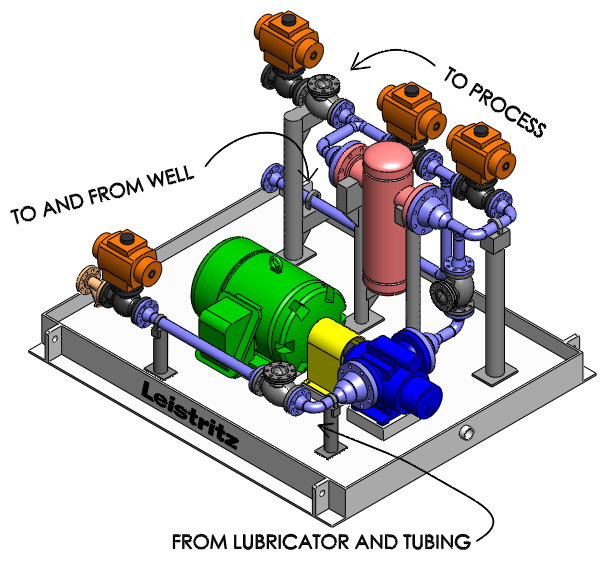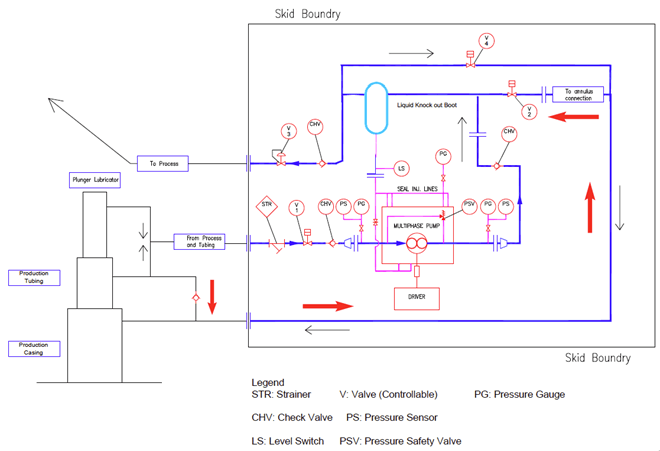The PAMP, can stimulate your well’s plunger operations by removing the fluids above the plunger and reinjecting the gas through the annulus to increase run efficiency and decrease the down-time for pressure accumulation.
With the dramatically increasing worldwide demand for natural gas and gas liquids the producers can now benefit from new technology which can better support production from liquid rich and low-pressure reservoirs.
Liquid loading is primarily mitigated with plungers where the well pressure controls the up-travel of the plunger and has to operate against low or zero backpressure to work. Normally to over-come the liquid column flaring or venting is necessary, and the liquids end up in a blow down tank and have to be transported away separately from site. Alternative to plunger assisted compres-sors with blow case systems, the Leistritz PAMP can handle the liquids effectively without down-time or maintenance issues..
Unlike a compressor the PAMP uses a twin-screw multiphase pump which brings significant ad-vantages:
Gas Well Deliquification Technology – Where Plunger Lift Meets Multiphase Pumping

